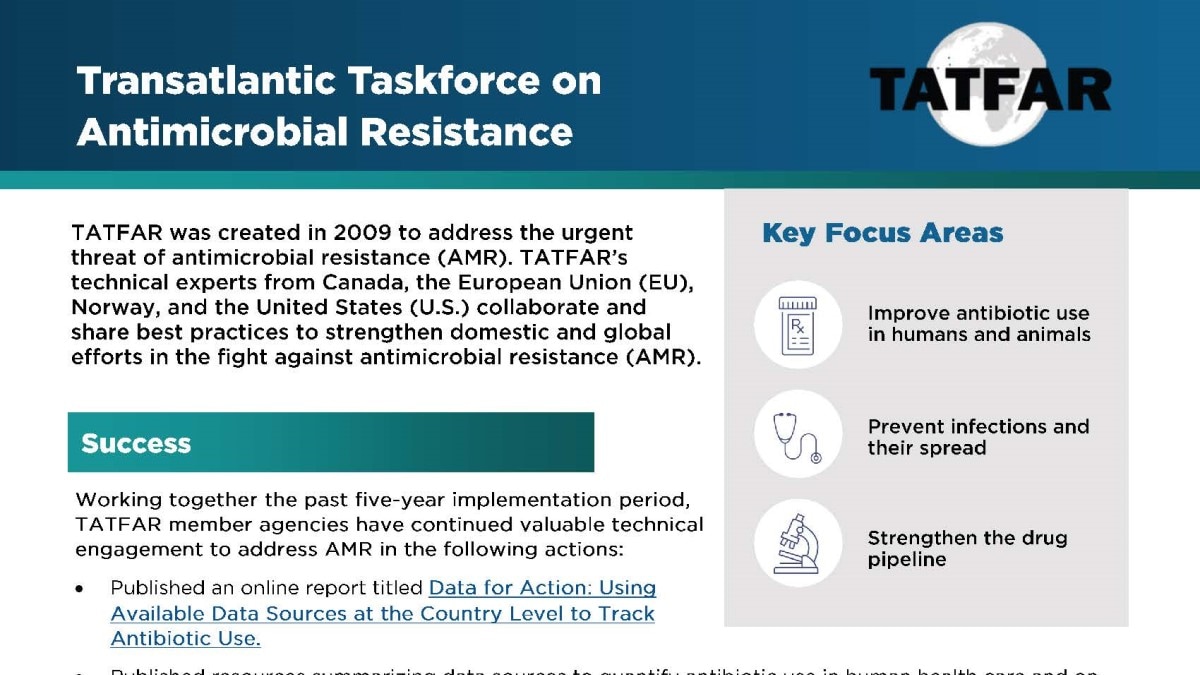Key points
Transatlantic Taskforce on Antimicrobial Resistance (TATFAR) produced five fact sheets to highlight member country roles and successes in fighting antimicrobial resistance (AMR) over the past 10 years.

Fact sheets summarize TATFAR to combat AMR
Posted: April 1, 2019
Proving the impact of "collaboration" is hard. After 10 years of valuable knowledge sharing, TATFAR has summarized its role and contribution to fighting AMR across the Atlantic with five fact sheets.
Since 2009, TATFAR's technical experts from Canada, the European Union, Norway and the United States have collaborated and shared best practices to strengthen domestic and global AMR efforts. For example, members share technical guidance, alerts of emerging trends and scientific recommendations that can translate globally, increasing the impact of efforts to combat AMR exponentially. Collaborations have resulted in increased information exchange, understanding best approaches and development of peer relationships.
This collaboration has also resulted in notable outcomes. For example, the Taskforce members:
- Created unique opportunities for scientific groups to discuss the development of new diagnostic tests and coordination of similar clinical trials.
- Reviewed antibiotic reduction goals in human medicine from TATFAR partner countries and drafted a summary for publication in a peer-reviewed journal.
- Expanded AMR expertise to include Taskforce members from Canada and Norway.
- Published papers summarizing economic incentives for antibacterial drug development.
In 2009, TATFAR identified and adopted 17 recommendations for future collaborations. That's now grown to 20 actions aimed at coordinating efforts to address AMR. These actions span three Key Areas:
- Improve appropriate therapeutic use of antimicrobial drugs in medical and veterinary communities.
- Prevent healthcare- and community-associated antimicrobial-resistant infections.
- Develop strategies for improving the pipeline of new antimicrobial drugs.
However, these results are sometimes challenging to convey because they are scientific, a combination of local and global action, and focus on networking and sharing information with colleagues on the other side of the Atlantic—which contributes to larger efforts.
That's why we made these five fact sheets to highlight the efforts each member country is taking, and how—together—TATFAR members are making strides in fighting AMR.
Resources
One fact sheet is an overall summary, and the other four are focused on these three Key Areas, breaking up Key Area 1 into two fact sheets (one on antibiotic use in humans, and the other in animals). TATFAR will update these fact sheets on an annual basis.
